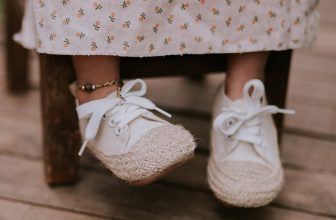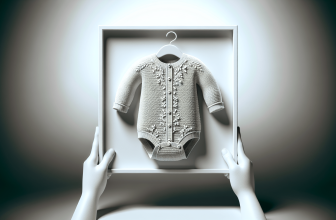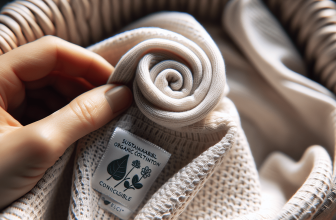As a parent, ensuring your baby is comfortable and well-dressed for each season can be a daunting task. From the scorching heat of summer to the frosty chill of winter, the ever-changing weather calls for a versatile wardrobe that caters to your little one’s needs. In this article, we will guide you through the world of baby clothing, offering valuable insights and tips on how to navigate seasonal changes effortlessly. From selecting the right fabrics to layering techniques, we’ve got you covered. So, let’s dive in and embark on this exciting journey of dressing your baby for every season!
Navigating Seasonal Changes: A Guide to Baby Clothing for Every Season
As a parent, ensuring your little one is dressed appropriately for each season is essential. Babies have delicate skin that is more sensitive to temperature changes, making it crucial to choose the right clothing to keep them comfortable and protected. In this comprehensive guide, we will explore the factors to consider when selecting baby clothing, essential items for each season, and helpful tips to navigate spring, summer, fall, and winter. We will also discuss layering techniques and how to adapt baby clothing for climate changes. Let’s dive in and help you navigate the ever-changing seasons with confidence!
Importance of Dressing Babies Appropriately for Each Season
Dressing your baby appropriately for each season is not just about fashion – it directly impacts their comfort and well-being. Babies are not able to regulate their body temperature as effectively as adults, so it falls upon parents to ensure they are dressed in clothing suitable for the weather. Proper attire not only keeps them warm or cool but also protects their sensitive skin from harsh elements and potential illnesses. By dressing your baby appropriately for the season, you are helping them stay comfortable and healthy.
Factors to Consider when Choosing Baby Clothing
When selecting baby clothing, there are several factors to keep in mind. Firstly, consider the weather conditions of the season. Is it hot and humid, or chilly and windy? Next, think about your baby’s age and how mobile they are. Newborns have different clothing needs compared to active toddlers. Additionally, pay attention to the fabric of the clothing. Soft, breathable materials such as cotton are usually recommended for babies as they are less likely to cause irritation. Lastly, consider the ease of dressing and changing diapers. Opt for clothing with convenient snaps, zippers, or elastic waistbands, making it easier for both you and your little one.
This image is property of images.unsplash.com.
Essential Baby Clothing Items for Every Season
Regardless of the season, certain baby clothing items are essential for keeping your little one comfortable and protected. These include onesies or bodysuits, pants or leggings, socks or booties, and hats. Onesies or bodysuits are versatile and can be layered under other clothing items or worn on their own during warmer months. Pants or leggings provide warmth and coverage for the lower body, while socks or booties keep those tiny feet cozy. Hats are essential throughout the year to protect your baby’s sensitive scalp from the sun or cold weather. By having these basic items in your baby’s wardrobe, you will have a solid foundation to build upon for each season.
Spring Clothing Tips for Babies
As the weather starts to warm up, dressing your baby for spring involves finding a balance between layers and breathability. Opt for lightweight, breathable fabrics such as cotton or bamboo that allow air circulation and prevent overheating. Dress your baby in layers, so you can easily add or remove clothing as the temperature fluctuates throughout the day. A light cardigan or hoodie is a great addition for cooler mornings or evenings. Don’t forget to protect your baby’s delicate skin from the sun by using sunscreen or dressing them in lightweight, long-sleeved shirts and pants. Lastly, keep a light blanket or muslin swaddle on hand for naps or breezy outings.
This image is property of images.unsplash.com.
Summer Clothing Tips for Babies
When it comes to dressing your baby for summer, the key is to keep them cool and protected from the sun’s harmful rays. Opt for lightweight, loose-fitting clothing in breathable fabrics such as cotton or linen. Dress your baby in light-colored clothing to reflect heat and keep them cooler. Choose sleeveless or short-sleeved onesies and dresses to allow for maximum ventilation. Don’t forget a wide-brimmed hat or a cap with a neck flap to shield their face and neck from the sun. It is also crucial to apply sunscreen to any exposed skin, including the face, hands, and feet. For hot summer nights, dress your baby in a lightweight, breathable sleep sack or use a fan to promote air circulation.
Fall Clothing Tips for Babies
Fall brings cooler temperatures and changing leaves, making it necessary to layer your baby’s clothing for comfort. Start with lightweight, long-sleeved onesies as a base layer and add a sweater or cardigan for added warmth. Opt for pants or leggings made from thicker fabrics like cotton fleece or corduroy. As the weather becomes more unpredictable, keep a lightweight jacket or a hoodie on hand to protect your baby from chilly winds. Don’t forget to cover their feet with socks or booties and keep a hat on to retain body heat. Layering allows you to easily adjust your baby’s outfit to accommodate fluctuating temperatures, ensuring they stay cozy and comfortable throughout the season.
This image is property of images.unsplash.com.
Winter Clothing Tips for Babies
Winter brings colder temperatures and the need for extra warmth and protection for your baby. Layering is key during this season to trap heat and provide insulation. Begin with a thermal or long-sleeved onesie as a base layer and add a thick sweater or fleece jacket for added warmth. Opt for pants or leggings made from warmer materials such as fleece or wool blends. Cover their feet with thick, cozy socks or booties, and don’t forget a hat that covers their ears to prevent heat loss. Mittens or gloves are essential to protect their tiny hands from the cold. To ensure their safety, avoid bulky clothing while using car seats or strollers by adding a blanket over them once strapped in.
Layering Techniques for Different Seasons
Layering is a practical and versatile technique that allows you to adjust your baby’s clothing according to the temperature throughout the day. During spring and fall, layering helps you add or remove clothing easily as the temperature fluctuates. Start with a lightweight base layer, such as a onesie or bodysuit, and add a light cardigan or hoodie for cooler mornings or evenings. In summer, opt for a single layer in breathable, lightweight fabrics to keep your baby cool and comfortable. In winter, layering becomes crucial to provide insulation and retain body heat. Begin with a thermal or long-sleeved onesie as a base layer, add a sweater or fleece jacket, and top it off with a coat or snowsuit when venturing outdoors.
Adapting Baby Clothing for Climate Changes
As the climate continues to change, adapting your baby’s clothing becomes increasingly important. Hotter summers and colder winters require adjustments to ensure your baby’s comfort and protection. Stay informed about the expected weather conditions and choose clothing accordingly. For hotter climates, opt for lightweight, breathable fabrics and dress your baby in loose-fitting clothing. Consider using cooling accessories like bandanas or neck fans to provide additional relief from the heat. In colder climates, invest in heavier winter gear such as snowsuits, thermal clothing, and insulated jackets to shield your baby from the cold. Stay attentive to your baby’s cues and adjust their clothing as needed to ensure their well-being in changing climates.
In conclusion, dressing your baby appropriately for each season is crucial for their comfort, protection, and overall well-being. By considering factors such as weather conditions, fabric choices, and ease of dressing, you can ensure your little one is comfortable and dressed in clothes suitable for the season. Essential baby clothing items like onesies, pants, socks, and hats form the foundation for each season’s wardrobe. Understanding the specific clothing tips for spring, summer, fall, and winter will help you navigate the varying weather conditions with confidence. Layering techniques and adapting clothing for climate changes further allow you to cater to your baby’s needs as the seasons evolve. Remember, dressing your baby for each season is not only a necessity but also an opportunity to showcase their adorable style. Enjoy exploring different clothing options and watching your little one grow throughout the year!











